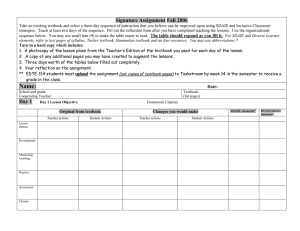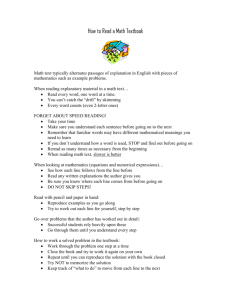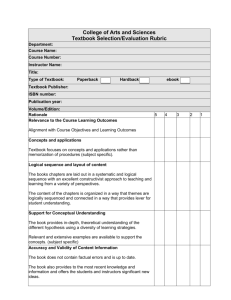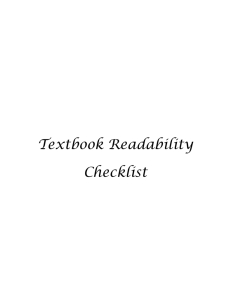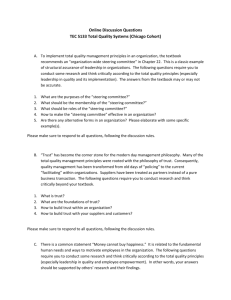Teacher-Student Interactions Course Syllabus
advertisement
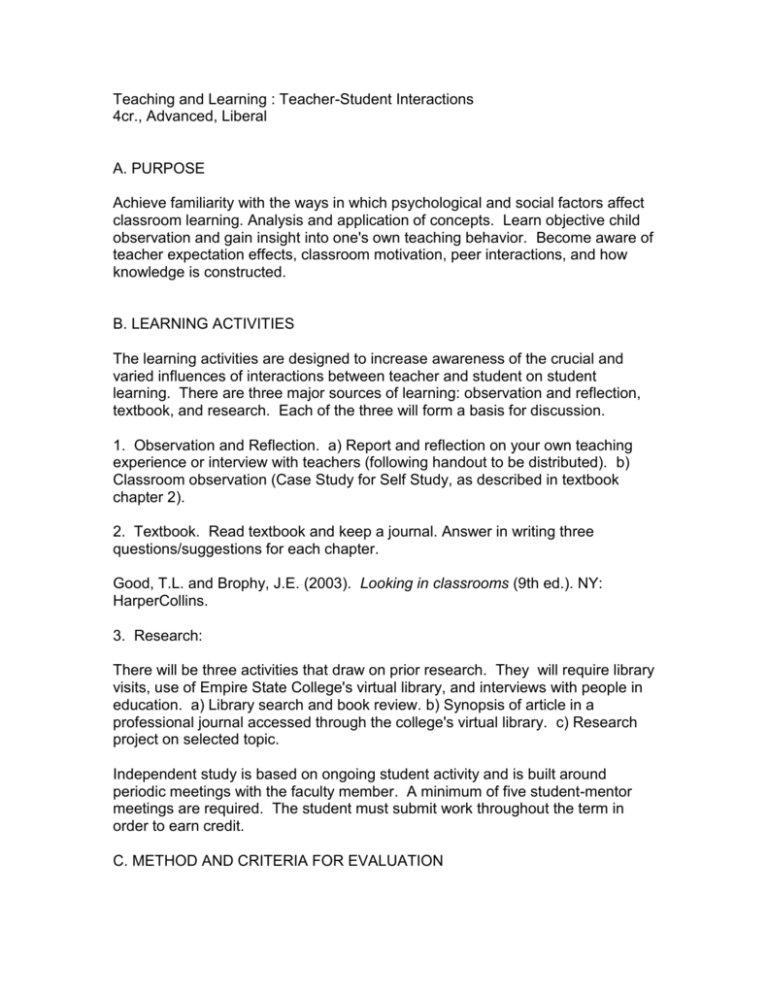
Teaching and Learning : Teacher-Student Interactions 4cr., Advanced, Liberal A. PURPOSE Achieve familiarity with the ways in which psychological and social factors affect classroom learning. Analysis and application of concepts. Learn objective child observation and gain insight into one's own teaching behavior. Become aware of teacher expectation effects, classroom motivation, peer interactions, and how knowledge is constructed. B. LEARNING ACTIVITIES The learning activities are designed to increase awareness of the crucial and varied influences of interactions between teacher and student on student learning. There are three major sources of learning: observation and reflection, textbook, and research. Each of the three will form a basis for discussion. 1. Observation and Reflection. a) Report and reflection on your own teaching experience or interview with teachers (following handout to be distributed). b) Classroom observation (Case Study for Self Study, as described in textbook chapter 2). 2. Textbook. Read textbook and keep a journal. Answer in writing three questions/suggestions for each chapter. Good, T.L. and Brophy, J.E. (2003). Looking in classrooms (9th ed.). NY: HarperCollins. 3. Research: There will be three activities that draw on prior research. They will require library visits, use of Empire State College's virtual library, and interviews with people in education. a) Library search and book review. b) Synopsis of article in a professional journal accessed through the college's virtual library. c) Research project on selected topic. Independent study is based on ongoing student activity and is built around periodic meetings with the faculty member. A minimum of five student-mentor meetings are required. The student must submit work throughout the term in order to earn credit. C. METHOD AND CRITERIA FOR EVALUATION Evaluation will be based on 1a (reflection), 1b (observation), 2 (discussion and journal), 3a (book review), 3b (journal article synopsis), and 3c (project).




